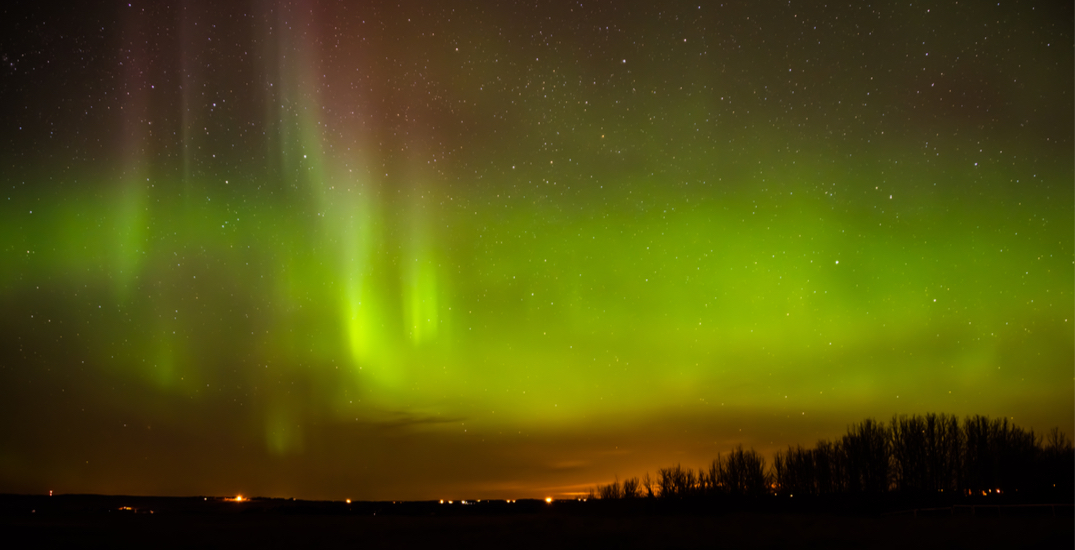Solar Storm Has Been Predicted To Illuminate The Northern Lights In 17 States
On Thursday, a solar storm has been predicted to illuminate the northern lights in 17 states, which has piqued the interest of sky watchers who are looking forward to catching a glimpse of the fascinating glow. The northern lights, commonly referred to as the aurora borealis, are something that may frequently be seen in places such as Alaska, Canada, and Scandinavia.
Author:Paolo ReynaReviewer:Hajra ShannonJul 11, 2023149.1K Shares2M Views

On Thursday, a solar storm has been predicted to illuminate the northern lights in 17 states, which has piqued the interest of sky watchers who are looking forward to catching a glimpse of the fascinating glow. The northern lights, commonly referred to as the aurora borealis, are something that may frequently be seen in places such as Alaska, Canada, and Scandinavia.
However, because the sun is currently in the midst of an extended 11-year cycle that is forecast to reach its apogee in 2024, these mesmerizing light displays have been visible in regions that are located further south. A significant geomagnetic storm occurred in Arizona sky just three short months ago, marking the occurrence of the third severe geomagnetic storm since the beginning of the current solar cycle in 2019.
Auroral activity is anticipated to take place on Thursday across the states of Alaska, Oregon, Washington, Idaho, Montana, Wyoming, North Dakota, South Dakota, Minnesota, Wisconsin, Michigan, New York, New Hampshire, Vermont, Indiana, Maine, and Maryland, as reported by the Geophysical Institute at the University of Alaska in Fairbanks. Additionally, auroral activity is forecasted to take place across Canada, including in Vancouver.
It is projected that the forthcoming solar storm will produce mesmerizing displays of light that will be seen in the skies above Milwaukee, Minneapolis, and Helena, Montana. According to the Geophysical Institute, the lights should also be seen low on the horizon in the cities of Salem, Oregon; Boise, Idaho; Cheyenne, Wyoming; Annapolis, Maryland; and Indianapolis.
The Space Weather Prediction Center of the National Oceanic and Atmospheric Administration recommends that anyone who want to observe the northern lights get away from the bright lights of cities in order to get the best possible view of the phenomenon. The hours of 10 p.m. and 2 a.m., local time, are typically considered to be the best times for viewing.
The northern lights are caused when the magnetic solar wind interacts with the Earth's magnetic field. This interaction causes atoms in the upper atmosphere to glow, which in turn causes the aurora borealis to appear. The lights suddenly appears, and their intensity changed during their appearance.
Conclusion
A geomagnetic index known as Kp, with a value range that goes from zero to nine, is used to quantify the activity of the aurora. A Kp value of zero implies that there is little activity, while a Kp value of nine suggests that auroras are brilliant and vigorous. The Kp value that has been predicted for Thursday's solar storm by the Geophysical Institute is 6.
Jump to

Paolo Reyna
Author
Paolo Reyna is a writer and storyteller with a wide range of interests. He graduated from New York University with a Bachelor of Arts in Journalism and Media Studies.
Paolo enjoys writing about celebrity culture, gaming, visual arts, and events. He has a keen eye for trends in popular culture and an enthusiasm for exploring new ideas. Paolo's writing aims to inform and entertain while providing fresh perspectives on the topics that interest him most.
In his free time, he loves to travel, watch films, read books, and socialize with friends.

Hajra Shannon
Reviewer
Hajra Shannona is a highly experienced journalist with over 9 years of expertise in news writing, investigative reporting, and political analysis.
She holds a Bachelor's degree in Journalism from Columbia University and has contributed to reputable publications focusing on global affairs, human rights, and environmental sustainability.
Hajra's authoritative voice and trustworthy reporting reflect her commitment to delivering insightful news content.
Beyond journalism, she enjoys exploring new cultures through travel and pursuing outdoor photography
Latest Articles
Popular Articles